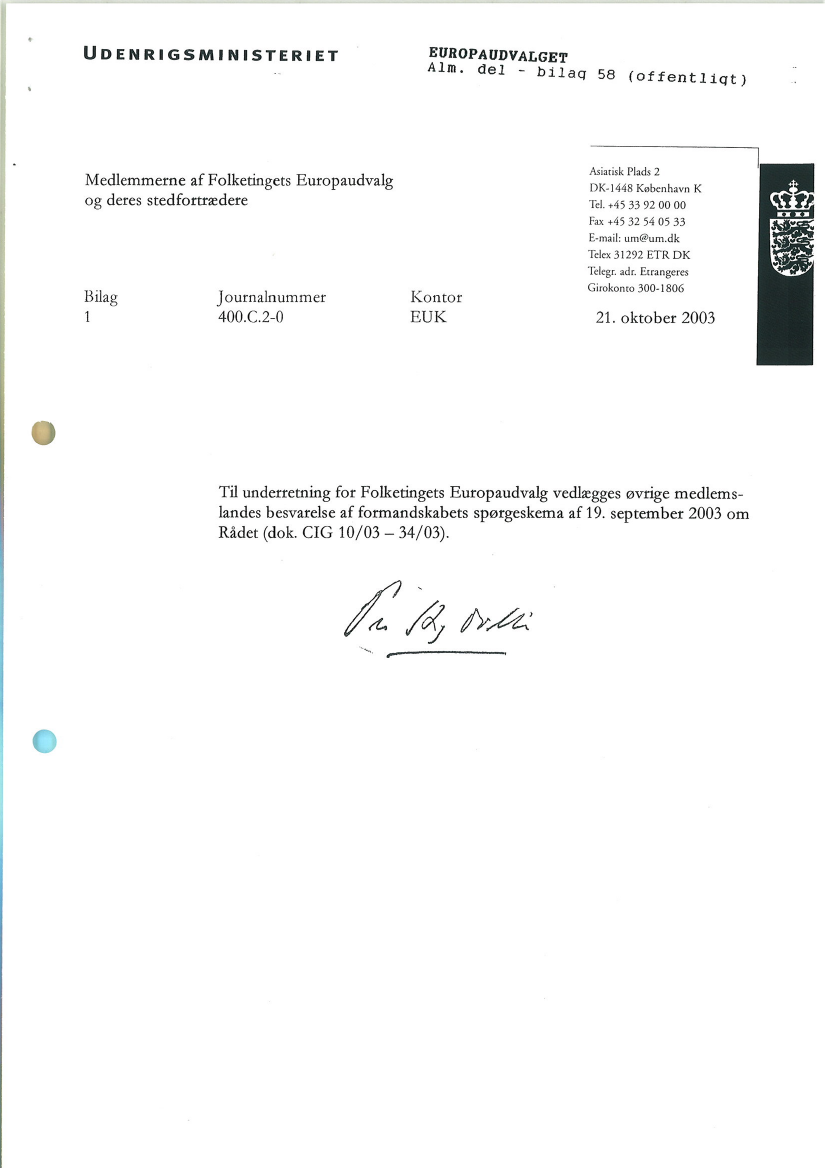
Uo¡NRtGsMtNtsrERtET
Alm.
del -
btlag
58
loffentlrqt)
EUAOPAUDVAf,GET
Medlemmerne
¿f
Folketingets Europaudvalg
og
detes
stedfotrædere
,Asiatisk Plads
2
DK-1448 København
K
Tel. +45
33 92 00 00
Fax
+45
32
54
05 33
E-mail: [email protected]
Telex3l292 ETR
DK
Tclegr.
adr. Etrangeres
Bilag
1
Journalnummer
400.c.2-0
I(ontor
EUK
Gi¡okonto 300-1806
21.
oktober
2003
Til
underetning
for
Folketiagets
Europaudr"lg
vedlægges
øvnge
medlems-
l¿ndes besvarelse
af formandsk¿bets
spørgeskemaú19.
september
2003
om
Rådet
(dok.
CIG t0/03
-34/03).
Ã/4 /\â